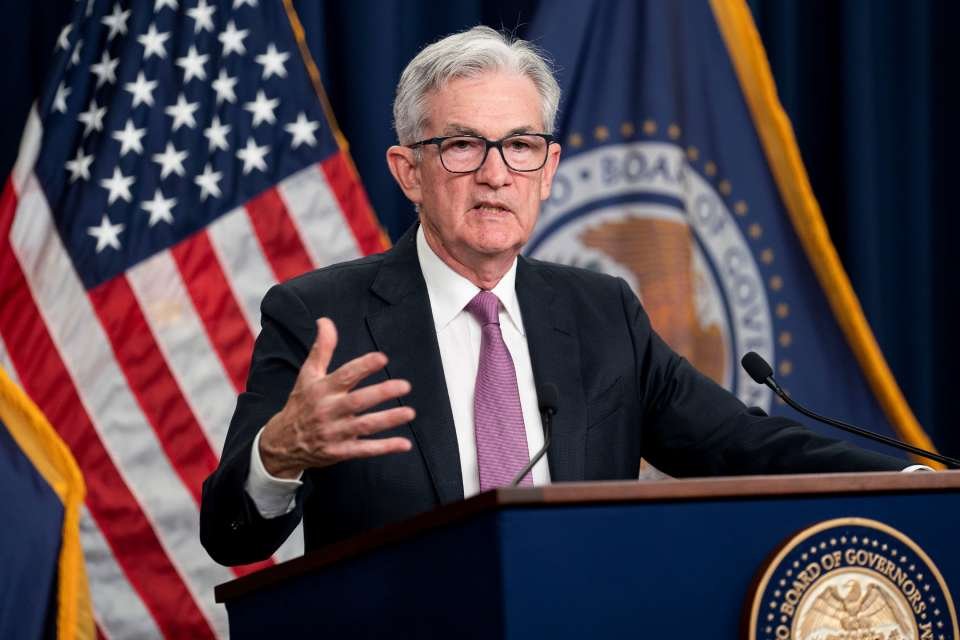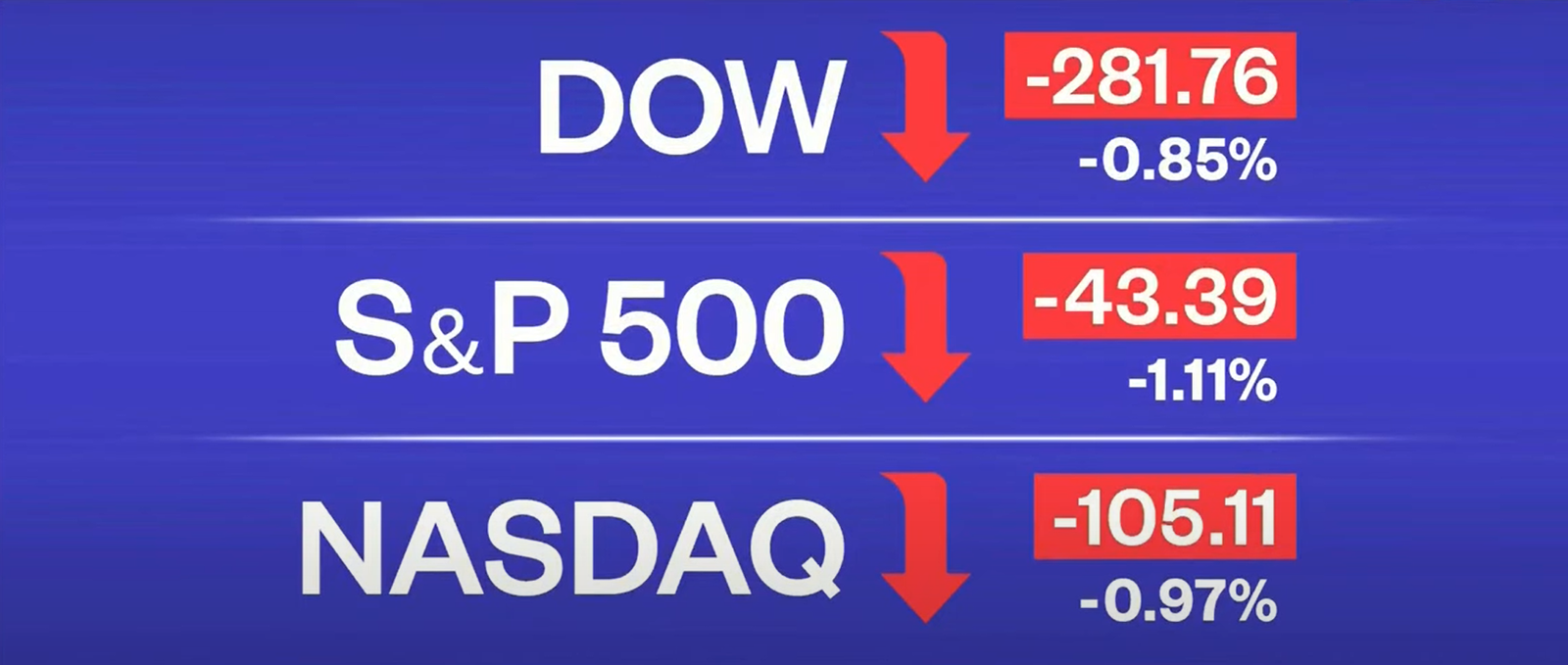
Since summer, inflation in the United States has been gradually decreasing after reaching 40-year highs. Since summer, inflation in the United States has been gradually decreasing after reaching 40-year highs. However the Central bank appears to be positively unamused — and unconvinced that its battle against speeding up costs is remotely close finished.
Stock markets gave in on Thursday as investors began to realize that the Federal Reserve may be willing to allow the economy to enter a recession in order to bring inflation back down to its target of 2% per year.
The worst day since early November saw a loss of approximately 100 points, or 2.5%, for the S&P 500 stock index. The losses occurred a day after the Fed’s seventh annual increase in its benchmark interest rate. The Fed’s half-point increase, from 4.25 percent to 4.5 percent, was widely anticipated.
Investors were alarmed by Wall Street’s growing awareness of the extent to which the Fed appears willing to go to combat high inflation. The Fed’s policymakers said in revised projections on Wednesday that they will raise their key rate by another three-quarters of a point to a hefty 5% to 5.25 percent and keep it there until 2023. A mere half-point increase in rate hikes had been anticipated by some Fed watchers.
Consumers and businesses alike will face higher borrowing costs as a result of those higher rates, including mortgages, auto loans, and business loans.
In addition, the policymakers lowered their forecast for economic growth in 2023 from the 1.2% they had predicted in September to a meager 0.5 percent, which was as close as they were likely to get to predicting a recession. Additionally, they increased their projection for the unemployment rate next year from 3.7% to 4.6%.
All of this suggested that the authorities anticipated, or at the very least would accept, a decline in the economy as a cost of controlling inflation.
According to Oxford Economics’ chief U.S. economist Ryan Sweet, the message the Fed was sending was blunt: We will damage something. Either we will stop inflation or the economy will collapse.
Many investors were under the impression that the Fed would soon be able to declare some progress in their fight and possibly even reverse course and cut rates sometime in 2023 as inflation pressures eased.
There appeared to be cause for optimism: This was the fifth month in a row that consumer prices fell, from 9.1% in June to 7.1% in July. Even more encouraging is the fact that prices only increased 0.1 percent month to month. The Fed closely monitors core inflation, which excludes volatile food and energy costs but rose just 0.2 percent from October to November, the smallest increase since August 2021.
Supply chains, which had previously been overwhelmed by customer orders, have experienced less stress as a result of the economy’s slowdown, which has led to price increases, delays, and shortages. Prices at the pump have decreased as a result of falling oil prices. According to AAA, the average price of a gallon of unleaded gasoline on Thursday was $3.19, down from $5.02 in the middle of June.
However, Fed Chair Jerome Powell was not in the mood to celebrate because he had been slow to recognize the inflation threat when it first surfaced in the spring of 2021. The indications of incremental progress were basically ignored by Powell.
He told reporters on Wednesday, “Two good monthly reports are very welcome.” However, we need to tell ourselves the truth: 12-month core inflation is 6%, which is three times the Fed’s target. It is encouraging to see progress, but we must acknowledge that price stability remains a long way off.
Unless inflation had significantly decreased by then, which he does not appear to anticipate, Powell appeared to stifle hopes that the Fed might cut rates by the end of the year—a move that typically acts like steroids for markets and the economy.
The policymakers raised their forecast for next year’s inflation above what they had anticipated in September. It suggested that they believe their fight against inflation is not having the desired effect.
That change caught many economists off guard. The Federal Reserve anticipates more rate hikes, a slower economy, and higher unemployment rates for the coming year.
In most cases, all of those things help control inflation. However, compared to their prediction of 2.8% in September, Fed officials anticipate that their preferred inflation gauge will be 3.1% by the end of 2023. That is likely too high for them to believe they can cut rates because it is higher than their 2% target.
Thursday’s rising concerns about a recession were not just brought on by the Fed. The European Central Bank, which is also aggressively fighting inflation, indicated that it might raise interest rates more than the markets anticipated, increasing the likelihood of a European recession.
The government of the United States revealed on Thursday that consumers decreased their retail spending in November. In the midst of the holiday shopping season, that was troubling news. Furthermore, the Central bank Banks of New York and Philadelphia gave downbeat provides details regarding fabricating in their locales. Long-term Treasury yields decreased, indicating that bond investors are becoming increasingly concerned about a possible recession.
Even the good news on Thursday, which showed that fewer Americans were applying for unemployment benefits, came with a drawback: It reinforced the Fed’s concern that rising wages and inflation as a whole are being pushed up by a robust job market.

The Federal Reserve is particularly stressed that a specialist deficiency in the work escalated administrations area — everything from eateries and lodgings to carriers and diversion scenes — could keep pay development high and make expansion more obstinate.
According to Sweet of Oxford Economics, “the Fed is overstating how strong inflation might be” is a possibility.
However, he stated that he understood its predicament: Powell and other policymakers are concerned that a central bank’s worst nightmare could occur if high inflation is not controlled, even if it means a recession next year: stagflation.” That’s the worst-case scenario, with high unemployment, persistent inflation, and weak growth.
There is no clear solution to this issue.
Sweet stated, “Faced with that choice, they’ll do everything they can to prevent it.”
This week, major central banks promised to increase borrowing costs further in their ongoing battle against sky-high inflation, indicating their willingness to accept a global recession in 2023.
Even though they acknowledged that their economies were weakening, the heads of the Federal Reserve, the European Central Bank, and the Bank of England all stated that further increases are likely next year after each increased rates by half a percentage point.
There is a growing possibility that a further tightening of monetary policy, on top of the tightest squeeze in four decades, will severely harm hiring and demand, causing the global economy to contract next year, just after the pandemic-driven contraction.
Ethan Harris, head of global economics research at Bank of America Corp., said, “We’re just on the edge of a global recession.” The fastest inflation rate since the 1980s has changed the “reaction function” of policymakers, including Fed Chair Jerome Powell. As economies collapsed, it would normally be expected of them to limit damage to households and businesses by easing credit.
However, despite economic contractions, central bankers are moving in the opposite direction with price growth well above their 2% targets. In addition, they insist that rates will remain higher for a longer period of time in order to contain inflation, despite the fact that many investors are betting that this stance will change as economies weaken and unemployment rises.
Harris stated, “There is a growing sense among the central banks that they would rather risk doing too much.” They don’t want to overdo it and have to return later to hike again.
Central bankers run the risk of repeating the same error as they did last year.
They underplayed the risks of rising price pressures in economies that were still struggling after the pandemic at the time. This allowed inflation to spiral out of control, resulting in this year’s swift reversal and significant rate increases.
Even though price pressures may be beginning to ease, particularly for goods, as economies slow and supply chains unclog, officials are now promising to continue their fight against inflation, perhaps chastened.
Much like in the 1970s, they are still particularly concerned about price expectations rising and elevated pressures becoming ingrained in their economies.
According to Powell’s statement on Wednesday, “the longer the current bout of high inflation continues, the greater the chance that expectations of higher inflation will become entrenched.”
A day later, President Christine Lagarde stated that the ECB also has “longer to go.”
The Bank of Japan is an exception, and it is anticipated that it will maintain its extremely loose policy settings next week.
Authorities underestimating how quickly inflation can fall as growth slows and supply chains hacked by Covid-19 unclog is a new global concern. Their rigid stance poses a threat because it could exacerbate an already dire situation, deepening recessions that central bankers hope will be brief and shallow.
According to a report by Joe Little, global chief strategist at HSBC Asset Management, “If 2022 was a year of the inflation surge, rising rates, and falling equity market multiples, 2023 is going to be a year about the macro cycle.” As headline inflation rates begin to fall, central bank hawkishness has probably reached its peak.
Officials at the BOE say that the UK is already in a recession, and their colleagues at the ECB say that the euro area went through one this quarter. Due to Russia’s invasion of Ukraine, rising energy costs have hammered both economies.
The United States of America is less vulnerable to the effects of the war, but the economy is still at risk due to higher rates and inflation. In projections released this week, two of Powell’s colleagues predicted a contraction in gross domestic product next year, despite Powell’s reluctance to declare a recession imminent.
Even though all three central banks are planning additional rate hikes in 2023, they are unlikely to be as uniform as this week.
Lagarde informed the markets that they are underestimating the ECB’s resolve, and Powell left the door open for the Fed to reduce its rate hike in February to a quarter-point increase. She announced plans to begin reducing a bond holding of nearly €5 trillion ($5.3 trillion), and she suggested that at least two additional half-point steps are on the horizon.
In the meantime, the focus is shifting to BOE rate cuts. While the majority of officials voted this week to increase by half a percentage point to 3.5%, two of them opposed the increase and suggested that policy should soon be relaxed. According to the meeting minutes, they believe that 3% is “more than sufficient to bring inflation back to target, before falling below target in the medium term.”
The job market is a major focus for all three central banks. The Organization for Economic Cooperation and Development reports that at 4.4% in the third quarter, unemployment in major developed economies was at its lowest level since the early 1980s. As a result, wages are rising and businesses are being forced to raise prices.
They also require the support of the financial markets. The overall message for 2023 appears to be clear: If they ease further, some of the higher borrowing costs will be offset. According to a report that was published on Friday, global head of foreign-exchange research at Deutsche Bank AG George Saravelos wrote, “central banks will push back on higher risky assets until the labor market starts to turn.” The Fed and ECB, the two largest central banks in the world, have sent a clear message: The financial situation must remain tight.
Each central bank deals with inflation in a different way. Former New York Fed President William Dudley, who is now a senior adviser to Bloomberg Economics, stated to Bloomberg Television that in the United States, “it’s all about the labor market.”
Energy supply disruptions account for a significant portion of the inflationary impulse in the euro area, with the pandemic’s sluggish recovery and the depreciation of the euro adding to the momentum.
Businesses and households are experiencing less pain as a result of government price caps, but expectations for future inflation are rising. Over the next three years, wages are expected to rise significantly above historical averages, according to the ECB.
It would appear that the UK has the worst of both worlds: The sudden rise in the cost of energy in Europe and labor shortages in the US. Since the middle of 2021, the price of wholesale natural gas has increased by sevenfold, and employment is 200,000 lower than it was before the pandemic. Premature retirements or illness-related layoffs have occurred.
Wages are rising as a result of a lack of available workers and vacancies. With the exception of the pandemic, regular private sector pay is currently expanding at a rate of 6.9%.
Dudley stated, “It appears to me like the Bank of England has the biggest problem with inflation.”
Despite this, he believes that the ECB faces the most difficult challenges due to the region’s dependence on Russian energy supplies and the unpredictable winter weather.
He stated, “They’re worried about inflation.” However, they are concerned about the impact of the energy price shock on economic expansion. Therefore, I would not wish to be in their position.


